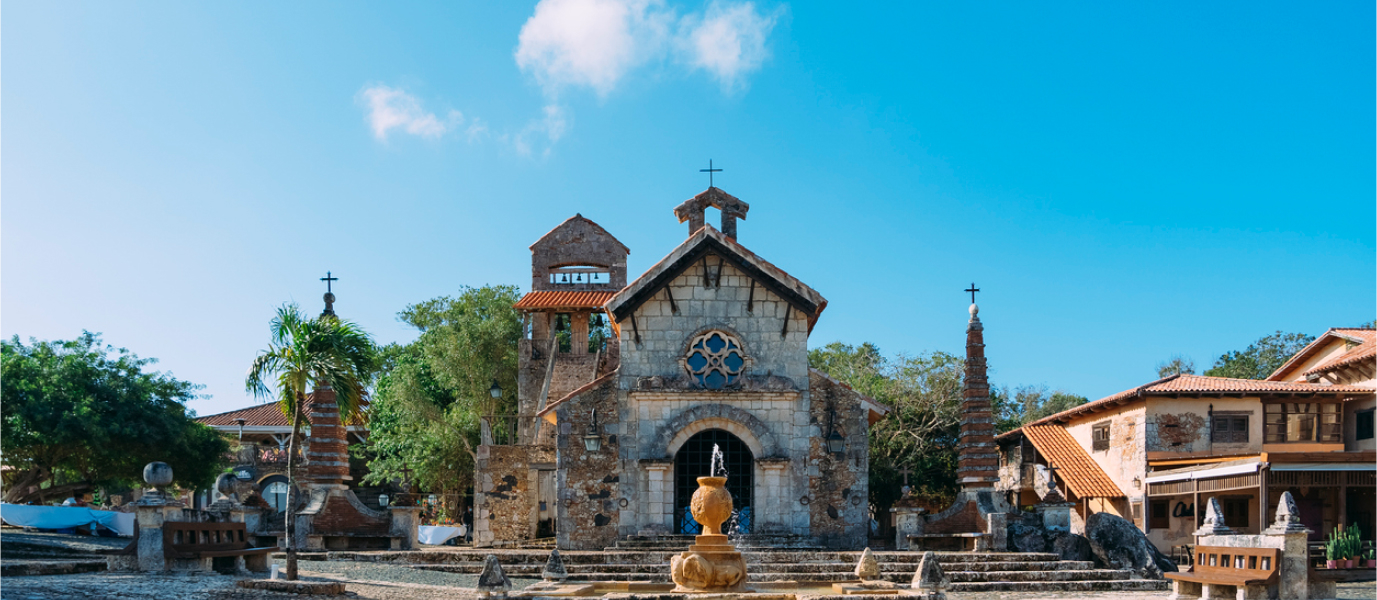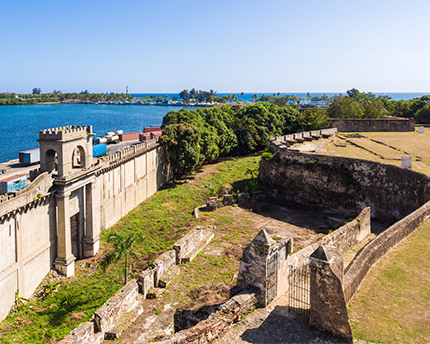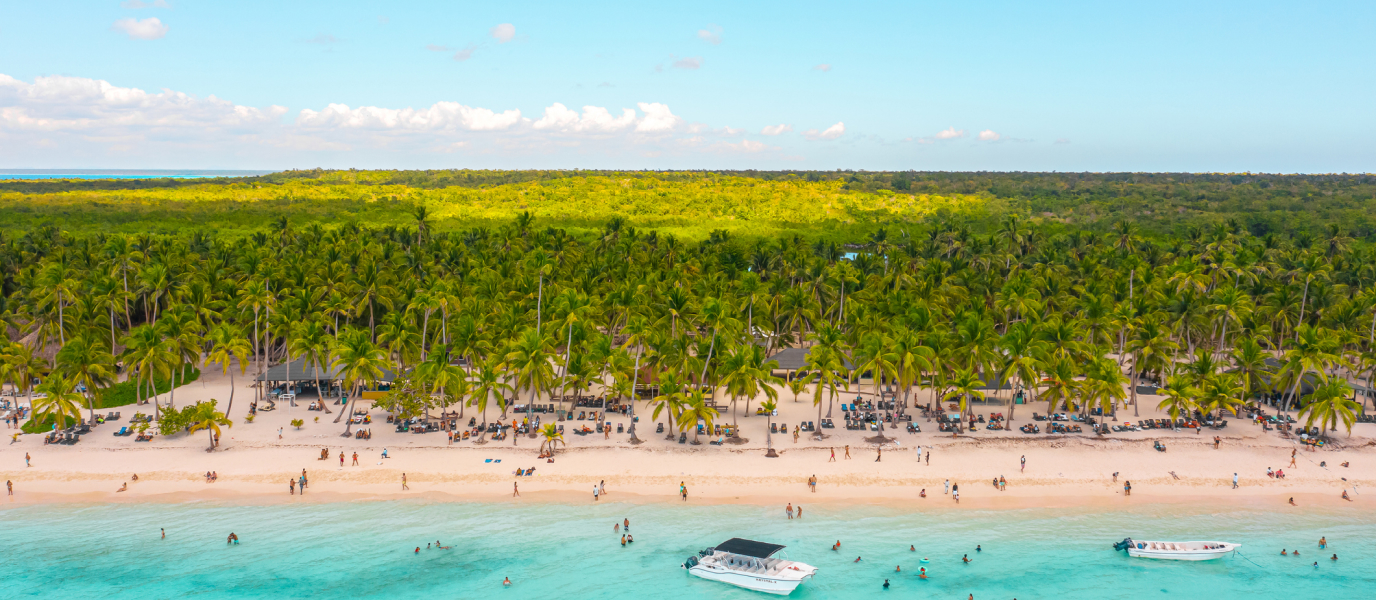Built in 1976, 100 meters atop the Chavón River and carved completely out of stone, Altos de Chavón is a recreation of a 16th-century Mediterranean village.
This charming village was designed by the Dominican architect José Antonio Caro and conceived by the Italian set designer Roberto Coppa, who in addition to coming up with the concept behind Altos de Chavón, spent years working with the Italian film makers Federico Fellini and Luciano Visconti.
Altos de Chavón brings together history and culture with an array of stores, jewelry and handicraft shops, bars, restaurants and stunning views of the Chavón River. This body of water located on the eastern side of the Dominican Republic was once used by pirates to hide treasures and also to transport precious woods during colonial times.
The village also boasts gorgeous views of Dye Fore Golf Course, a masterpiece by the great American designer Pete Dye and featuring 27 holes, seven of which run along the edge of a cliff overlooking the Chavón River.
Altos de Chavón is a stage that transports visitors to a Mediterranean village and a Greek amphitheater, but every single detail—buildings, paths, stone and iron sculptures—has been made by local artisans.
A Greek amphitheater, medieval church, museum, design and an amazing river await at Altos de Chavón.
Altos de Chavón is an unexpected recreation of a 16th-century Mediterranean village tucked away in the Caribbean. With views of the warm, turquoise waters found in this part of the world, and overlooking the Chavón River that runs below, this is the best way to reminisce upon Europe and the Antilles.
Located on a stretch of land atop the Chavón River, the village is a cultural landmark for visitors as well as for artists from all over the world, which explains why it is known as “the city of artists.”
As visitors stroll along its cobblestone streets, they come across a majestic amphitheater just like the ones built in ancient Greece.
With space for 5,000 spectators, this outdoor venue offers first-rate performances and concerts featuring top artists from the Dominican Republic and all over the world.
The amphitheater at Altos de Chavón opened its doors on August 20, 1982, with the “Concert for the Americas” featuring performances by Frank Sinatra, Buddy Rich, Heart and Carlos Santana.
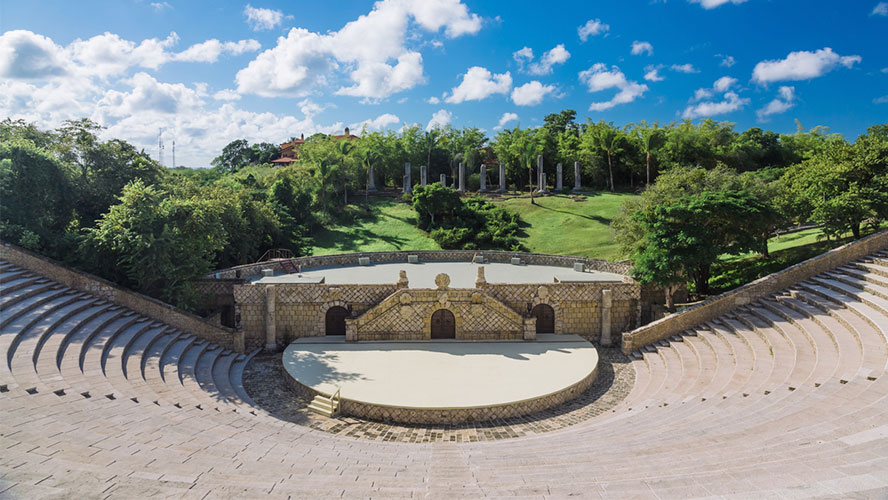
In recent years, artists along the lines of Sting, Pet Shop Boys, Elton John, Gloria Estefan, Plácido Domingo and, of course, the internationally renowned Juan Luis Guerra, have delighted audiences on this stage.
The heart of the village is home to one of the most beautiful churches in the Dominican Republic, St. Stanislaus, whose stone structure reminds us of medieval times.
This church holds a special place in the heart of followers because in 1979, during a visit to the Dominican Republic, Pope John Paul II left behind some of the ashes of St. Stanislaus, the patron saint of Poland, to celebrate its opening.
The Church of St. Stanislaus is very popular for weddings, in part because of its beauty and also because of its unforgettable views of the Chavón River, and parishioners can also go to mass there on weekends.
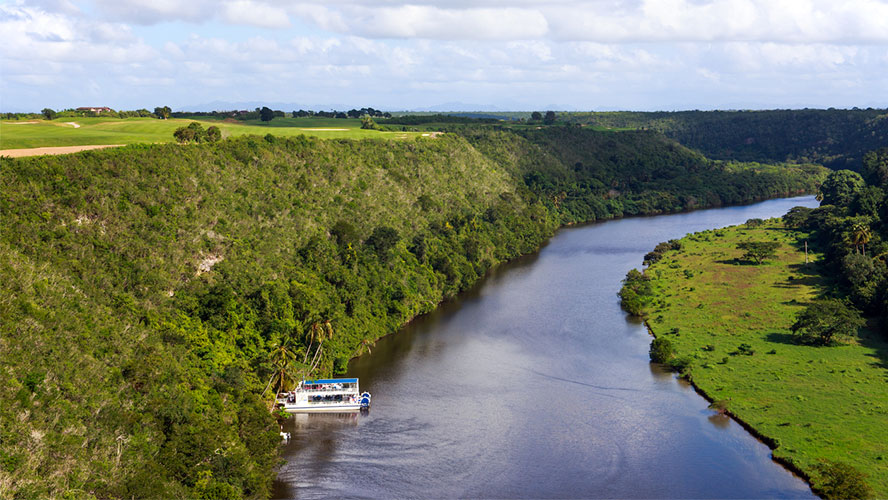
To learn about the history of Altos de Chavón and of the Dominican Republic, there is no better place than the Regional Museum of Archeology, located in the village and home to one of the nation’s most extensive collections about Taino culture, the largest ethnic group that inhabited the island that would be called Hispaniola when the Europeans arrived.
The museum originally opened in 1981 and is one of the most complete in the Caribbean. It has more than 3,000 pieces—dating as far back as 4000 BC to 1492—on display for visitors in a vast, organized space.
Research and educational activities are continuously being carried out at the Regional Museum of Archeology in Altos de Chavón.
Since Altos de Chavón is known as “the city of artists,” it is easy to understand why it has a School of Design, offering an academic experience in film, design, art and fashion to students from the Caribbean, Latin America and all over the world.
The School of Design was founded in 1983 as part of the renowned Parsons School of Design, a leading visual arts university in the United States, dating back to 1896.
With this prestigious backing, graduates from the School of Design are industry leaders who work for international brands throughout the world.
The village offers visitors countless sensory, cultural and educational experiences, but above all, the chance to gaze at the Chavón River from there is unforgettable.
Located in the east of the Dominican Republic, this river has a heavy flow that begins inland and runs into the Caribbean Sea, beyond the Roman city.
Surrounded by cliffs and lush vegetation, the area around this river has served as the perfect filming location for Hollywood hits such as the award-winning Apocalypse Now by Francis Ford Coppola, Rambo I starring Sylvester Stallone, and Jurassic Park by Steven Spielberg.

























































